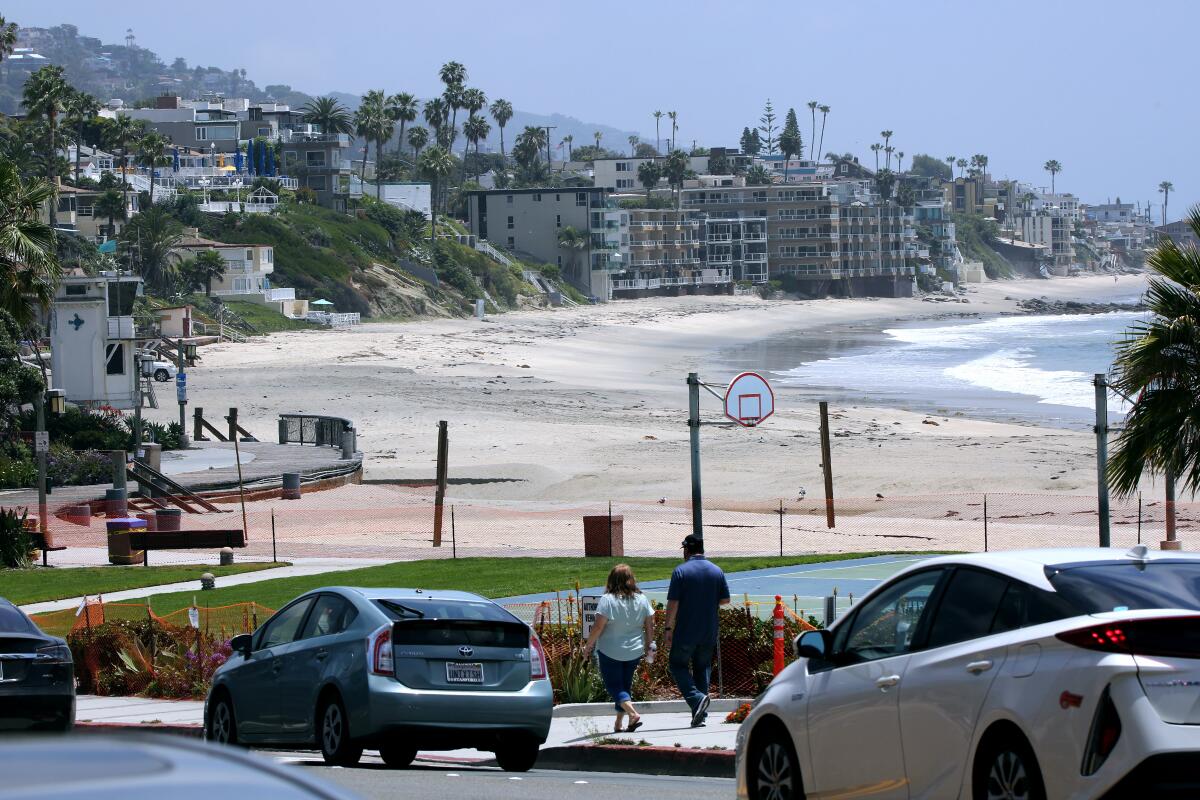Laguna Beach refines development standards

Spurred by a ballot measure put forth by some Laguna Beach residents concerned about development within the city that threatens its small-town character, the City Council this week approved amendments to a zoning ordinance and local coastal program.
Laguna Residents First’s measure, which will appear on the November ballot, asks voters whether they should be given a greater say in large-scale projects along Coast Highway and Laguna Canyon Road.
A council majority comprising Mayor Sue Kempf, Mayor Pro Tem Bob Whalen and Councilman Peter Blake on July 19 adopted a resolution of opposition to the ballot initiative.
Whalen said he’d met with a group that included local architect Morris Skenderian and developer Joe Hanauer, as well as Laguna Residents First board members David Raber and John Thomas to discuss their concerns. Whalen said the sides negotiated “in good faith” but could not reach an agreement on an alternative ballot measure.
“Some of these [amendments] are reflective of a lot of the discussions we were having,” Whalen said. “I think it would have been great for the community if we could have come together with a mutually acceptable alternative. We didn’t get there, but I still think out of this there’s really been some good, positive things.”
Community development director Marc Wiener on Tuesday night presented the recommended changes to the city’s zoning ordinance pertaining to building height, mass and bulk, and a parking master plan.
The downtown specific plan already prohibited lot mergers exceeding 5,000 square feet. One revision approved this week is that the same standard be codified in the municipal code. Also, lot mergers of 15,000 square feet or greater, under the amendments approved by the council, will not be allowed within 500 feet of the downtown area. Public facilities and parking structures, though, will be exempt from the lot merger standards.
Under the amended ordinance, building frontages cannot be greater than 125 feet in length, a standard that also applies to corner lots with multiple street frontages. The planning commission will have the authority to allow for exceptions, provided other design objectives are met.
For projects of 15,000 square feet or larger, 10% of the land must be dedicated to open space with public accessibility. Landscaping will be required for surface parking lots.
The council requested staff add a section to the ordinance before its second reading establishing an absolute height limit of 36 feet for all new buildings.
At Wiener’s suggestion, the council directed staff to consult with the planning commission to have commercial design guidelines formulated. Wiener said the guidelines could be back in front of the council by September.
“While I think the ordinance and the code amendments are a very useful tool for helping guide the project, with the guidelines, we would get some of the more nuanced details of what it is we’re looking for in terms of design,” Wiener told the City Council. “We can provide more flexibility and options to architects, and it would be a really good document to have in association with the ordinance. … It would not need to be part of our local coastal program.”
Councilman George Weiss broached the subject of just how many visitors the city can handle at one time.
“We need a visitor management plan … in addition to a master parking plan,” Weiss said. “Any living or artificially created system, there’s a limit on the system’s carrying capacity, and when that limit has been met or exceeded, the system breaks down.
“The reason the overlay zone ballot initiative exists and was supported by 2,600 residents [who signed the ballot’s qualifying petition] is simple. Over the years, residents have lost trust in city government, including council, because of the fundamental shifts in dismantling protections of residents’ quality of life.”
Kempf noted that businesses in town are utilized by residents, too, not just visitors.
“I go to restaurants all the time, and most people I know in this town do, and most people use the town,” Kempf said. “You have people that you never see out in town anywhere, but most people go out and really enjoy our town because our town is a wonderful, enjoyable place to live.”
All the latest on Orange County from Orange County.
Get our free TimesOC newsletter.
You may occasionally receive promotional content from the Daily Pilot.




